Rancho Cucamonga, California, Hgh State Clinic, Hgh Injections, Hrt Doctors
Rancho Cucamonga, California Blood Testing Facilities

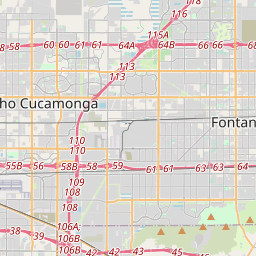
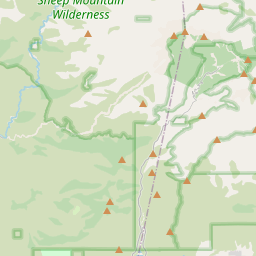

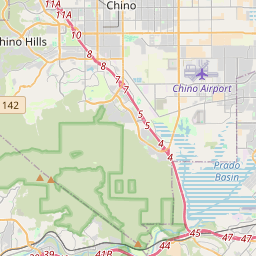













































































































































































































































































































































































































































































 Represents a LabCorp blood testing facility
Represents a LabCorp blood testing facility Represents a Quest Diagnostics blood testing facility
Represents a Quest Diagnostics blood testing facility

Nearby Labcorp Blood Testing facilities:
- Labcorp Center Distance: 1 m, 10801 Foothill Blvd Ste 105, Rancho Cucamonga, San Bernardino County, CA, 91730
- Labcorp Center Distance: 2 m, 1310 San Bernardino Rd Ste 107, Upland, San Bernardino County, CA, 91786
- Labcorp Center Distance: 7 m, 12555 Central Ave. Ste Af, Chino, San Bernardino County, CA, 91710
- Labcorp Center Distance: 8 m, 1900 Royalty Drive Suite 230, Pomona, Los Angeles County, CA, 91767
- Labcorp Center Distance: 13 m, 1335 Cypress Ave. Suite 101, San Dimas, Los Angeles County, CA, 91773
- Labcorp Center Distance: 15 m, 6927 Brockton Ave Ste 1B, Riverside, Riverside County, CA, 92506
- Labcorp Center Distance: 16 m, 900 S. Main St. Suite 207, Corona, Riverside County, CA, 92882
- Labcorp Center Distance: 17 m, 800 Magnolia Ave Ste 108, Corona, Riverside County, CA, 92879
- Labcorp Center Distance: 18 m, 399 E. Highland Ave. Ste 510, San Bernardino, San Bernardino County, CA, 92404
- Labcorp Center Distance: 20 m, 1201 N. Rose Dr. Suite 202, Placentia, Orange County, CA, 92870
- Labcorp Center Distance: 22 m, 255 Terracina Blvd Ste 106, Redlands, San Bernardino County, CA, 92373
- Labcorp Center Distance: 23 m, 12712 Heacock St. Ste 7, Moreno Valley, Riverside County, CA, 92553
- Labcorp Center Distance: 24 m, 1950 Sunnycrest Dr. Suite 1800, Fullerton, Orange County, CA, 92835
- Labcorp Center Distance: 25 m, 301 W. Huntington Dr. Ste 404, Arcadia, Los Angeles County, CA, 91007
- Labcorp Center Distance: 26 m, 622 W. Duarte Rd. Suite 303, Arcadia, Los Angeles County, CA, 91007
- Labcorp Center Distance: 27 m, 17450 Main St. Suite C, Hesperia, San Bernardino County, CA, 92345
- Labcorp Center Distance: 28 m, 100 N. Tustin Avenue, Tustin, Orange County, CA, 92780
- Labcorp Center Distance: 29 m, 126 Avocado Ave. Ste 105, Perris, Riverside County, CA, 92571
- Labcorp Center Distance: 30 m, 12332 Hesperia Rd Suite B, Victorville, San Bernardino County, CA, 92395
- Labcorp Center Distance: 31 m, 34845 Yucaipa Bl. Ste B, Yucaipa, San Bernardino County, CA, 92399
- Labcorp Center Distance: 32 m, 19341 Bear Valley Rd Ste 102, Apple Valley, San Bernardino County, CA, 92308
- Labcorp Center Distance: 33 m, 11180 Warner Ave. Suite 155, Fountain Valley, Orange County, CA, 92708
- Labcorp Center Distance: 34 m, 31571 Canyon Estates Dr Ste101, Lake Elsinore, Riverside County, CA, 92532
- Labcorp Center Distance: 35 m, 16008 Kamana Dr. Suite 201, Apple Valley, San Bernardino County, CA, 92307
- Labcorp Center Distance: 36 m, 10420 Beaumont Ave. Suite G, Cherry Valley, Riverside County, CA, 92223
- Labcorp Center Distance: 37 m, 29798 Haun Rd Ste 102, Menifee, Riverside County, CA, 92586
- Labcorp Center Distance: 38 m, 1190 Pacific Coast Hwy Ste C, Seal Beach, Orange County, CA, 90740
- Labcorp Center Distance: 39 m, 555 W. Compton Blvd. Suite 201, Compton, Los Angeles County, CA, 90220
- Labcorp Center Distance: 40 m, 2690 Pacific Ave. Suite 330, Long Beach, Los Angeles County, CA, 90806
- Labcorp Center Distance: 41 m, 36320 Inland Valley Dr Ste 103, Wildomar, Riverside County, CA, 92595
- Labcorp Center Distance: 42 m, 2701 W Alameda Ave Ste 203, Burbank, Los Angeles County, CA, 91505
- Labcorp Center Distance: 43 m, 850 E. Latham Ave. Ste Cd, Hemet, Riverside County, CA, 92544
- Labcorp Center Distance: 44 m, 25405 Hancock Ave. Suite 107, Murrieta, Riverside County, CA, 92562
- Labcorp Center Distance: 45 m, 627 West Ave Q Suite B, Palmdale, Los Angeles County, CA, 93551
- Labcorp Center Distance: 46 m, 3831 Hughes Ave. Ste 607, Culver City, Los Angeles County, CA, 90232
- Labcorp Center Distance: 47 m, 27699 Jefferson Ave Ste 209, Temecula, Riverside County, CA, 92590
- Labcorp Center Distance: 48 m, 1360 W 6Th St Ste 190, San Pedro, Los Angeles County, CA, 90732
- Labcorp Center Distance: 50 m, 15211 Vanowen St Ste 319, Van Nuys, Los Angeles County, CA, 91405
- Labcorp Center Distance: 51 m, 31150 Temecula Parkway Ste 201, Temecula, Riverside County, CA, 92592
- Labcorp Center Distance: 53 m, 18399 Ventura Blvd. Suite 17, Tarzana, Los Angeles County, CA, 91356
- Labcorp Center Distance: 54 m, 587 E. Elder Street, Fallbrook, San Diego County, CA, 92028
- Labcorp Center Distance: 57 m, 23928 Lyons Ave. Suite 104, Newhall, Los Angeles County, CA, 91321
- Labcorp Center Distance: 58 m, 23823 Valencia Blvd. Suite 150, Valencia, Los Angeles County, CA, 91355
- Labcorp Center Distance: 59 m, 7301 Medical Center Dr Ste 304, West Hills, Los Angeles County, CA, 91307
- Labcorp Center Distance: 60 m, 27420 Tourney Rd. Suite 140, Valencia, Los Angeles County, CA, 91355
- Labcorp Center Distance: 62 m, 555 E. Tachevah Dr. Suite 3E, Palm Springs, Riverside County, CA, 92262
- Labcorp Center Distance: 63 m, 574 E. Virginia Way, Barstow, San Bernardino County, CA, 92311
- Labcorp Center Distance: 65 m, 2067 West Vista Way Suite 275, Vista, San Diego County, CA, 92083
- Labcorp Center Distance: 68 m, 2655 First St. Suite 340, Simi Valley, Ventura County, CA, 93065
- Labcorp Center Distance: 70 m, 1595 Grand Ave Ste 109, San Marcos, San Diego County, CA, 92078
- Labcorp Center Distance: 71 m, 35400 Bob Hope Dr. Ste 111, Rancho Mirage, Riverside County, CA, 92270
Nearby Quest Blood Testing facilities:
- Quest Center Distance: 2 m, 1399 E Foothill Blvd, Upland, San Bernardino County, CA, 91786-4060
- Quest Center Distance: 10 m, 4028 Grand Ave, Chino, San Bernardino County, CA, 91710-5486
- Quest Center Distance: 14 m, 4646 Brockton Ave, Riverside, Riverside County, CA, 92506-0103
- Quest Center Distance: 15 m, 9041 Magnolia Ave, Riverside, Riverside County, CA, 92503-3956
- Quest Center Distance: 16 m, 118 W 9Th St, Corona, Riverside County, CA, 92882-3320
- Quest Center Distance: 17 m, 2250 S. Main St, Corona, Riverside County, CA, 92882-2534
- Quest Center Distance: 18 m, 2150 N Waterman Ave, San Bernardino, San Bernardino County, CA, 92404-4811
- Quest Center Distance: 21 m, 6485 Day St, Riverside, Riverside County, CA, 92507-0926
- Quest Center Distance: 25 m, 15141 Whittier Blvd, Whittier, Los Angeles County, CA, 90603-2158
- Quest Center Distance: 27 m, 1310 W Stewart Dr, Orange, Orange County, CA, 92868-3838
- Quest Center Distance: 28 m, 801 N Tustin Ave, Santa Ana, Orange County, CA, 92705-3607
- Quest Center Distance: 29 m, 416 W Lastunas Dr, San Gabriel, Los Angeles County, CA, 91776-1236
- Quest Center Distance: 30 m, 12370 Hesperia Rd, Victorville, San Bernardino County, CA, 92395-4787
- Quest Center Distance: 31 m, 4950 Barranca Pkwy, Irvine, Orange County, CA, 92604-8648
- Quest Center Distance: 33 m, 11180 E Warner Ave, Fountain Valley, Orange County, CA, 92708-7515
- Quest Center Distance: 34 m, 23521 Paseo De Valencia, Laguna Hills, Orange County, CA, 92653-3673
- Quest Center Distance: 35 m, 32251 Mission Trl, Lake Elsinore, Riverside County, CA, 92530-4536
- Quest Center Distance: 36 m, 18800 Main St, Huntington Beach, Orange County, CA, 92648-1718
- Quest Center Distance: 37 m, 420 E 3Rd St, Los Angeles, Los Angeles County, CA, 90013-1646
- Quest Center Distance: 38 m, 1127 Wilshire Blvd, Los Angeles, Los Angeles County, CA, 90017-3901
- Quest Center Distance: 44 m, 8501 Wilshire Blvd, Beverly Hills, Los Angeles County, CA, 90211-3117
- Quest Center Distance: 47 m, 27699 Jefferson Ave, Temecula, Riverside County, CA, 92590-2696
- Quest Center Distance: 48 m, 1294 W 6Th St, San Pedro, Los Angeles County, CA, 90731-2998
- Quest Center Distance: 54 m, 18250 Roscoe Blvd, Northridge, Los Angeles County, CA, 91325-4265
- Quest Center Distance: 63 m, 309 E Mountain View St, Barstow, San Bernardino County, CA, 92311-2814
- Quest Center Distance: 65 m, 3601 Vista Way, Oceanside, San Diego County, CA, 92056-4559
- Quest Center Distance: 66 m, 2876 Sycamore Dr, Simi Valley, Ventura County, CA, 93065-1550
- Quest Center Distance: 67 m, 57370 29 Palms Hwy, Yucca Valley, San Bernardino County, CA, 92284-2900
- Quest Center Distance: 70 m, 1220 La Venta Dr., Westlake Village, Ventura County, CA, 91361-3749
- Quest Center Distance: 74 m, 477 N El Camino Real, Encinitas, San Diego County, CA, 92024-1353
- Quest Center Distance: 82 m, 81715 Dr Carreon Blvd, Indio, Riverside County, CA, 92201-5564
- Quest Center Distance: 84 m, 500 Paseo Camarillo, Camarillo, Ventura County, CA, 93010-5900
- Quest Center Distance: 86 m, 807D Tucker Rd, Tehachapi, Kern County, CA, 93561-2510
- Quest Center Distance: 98 m, 5103 Garfield St, La Mesa, San Diego County, CA, 91941-5103
Rancho Cucamonga California Hormone Replacement Therapy Services
Hormone Balance and Restoration has taken America by storm. Millions of patients nationwide have turned to reputable Hormone Clinics in order to experience the amazing benefits of Hormone Optimization. The Conscious Evolution Institute is a licensed and board-certified HRT Center which specializes in Hormone Deficiency Treatments for patients thirty years and older.
If you feel that Hormone Deficiencies such as Testosterone Deficiency or Human Growth Hormone Deficiency are having a negative impact on your health and vitality, we can provide you with comprehensive Hormone Testing designed to assess a wide variety of indicators of Hormone Balance and overall wellness.
We have affiliate medical professionals located throughout San Bernadino County that are trained to provide the preliminary examination that we require to provide you with a fully-informed diagnosis of your Health and Hormone Status. With their expertise and the results of a simple blood sample, our experienced Hormone Doctors will have all of the health data at their disposal to distinguish your health needs and recommend a course of Hormone Therapy that will best improve your Hormone Balance. Give us a call at the number that you see at the top of the page to speak with us directly, or just fill out the form you see on this page to get started!
Rancho Cucamonga Men's Clinic for Low-T
Testosterone Therapy is the most asked-about treatment at the Conscious Evolution Institute. Age-Related Low-T, also known as Andropause or Age-Associated Hypogonadism in Men, is a serious medical condition which afflicts millions of men. The saddest thing is that the vast majority of men suffering from the clinical effects of Andropause don't reach out to a Hormone Doctor.
Testosterone Deficiency depletes both sexual function and overall health, suppressing libido, draining energy, and increasing the risk of various conditions ranging from hypertension and diabetes to stroke and heart attack. This doesn't have to be the case for you. Testosterone Replacement with Low-T Creams, Injections, or Patches can reverse the negative health issues related to Testosterone Deficiency and increase your physical, sexual, and psychological vitality.
Rancho Cucamonga Human Growth Hormone Clinic for HGH Deficiency
Human Growth Hormone is the cornerstone of good health, and it is necessary for you to retain adequate HGH Balance in order to grow older with maximum health and vitality. Your risk of symptomatic Growth Hormone Deficiency increases with every passing year after age 30. Human Growth Hormone regulates cellular metabolism, and as HGH Levels fall, your body is no longer able to keep up with its own demands and your health begins to deteriorate, as well as your physical appearance and apparent age.
Symptoms of Somatopause include unexpected weight gain (especially around the stomach and hips), lack of energy, loss of muscle mass, issues with memory and cognition, poor cholesterol balance, and more. Daily injections of Human Growth Hormone can safely restore HGH Levels back to normal and help mitigate the effects of Hypopituitarism. With our help we can get Your Hormone Balance back on track!
Rancho Cucamonga Sermorelin Injections for Growth Hormone Optimization
In addition to affordable HGH Injections, our Rancho Cucamonga Hormone Doctors can also prescribe you with Sermorelin Acetate for Growth Hormone Deficiency. Studies clearly show that Sermorelin is equally as effective as Recombinant Growth Hormone for the treatment of Age-Associated Hypopituitarism.
Sermorelin encourages normalized secretion of natural Growth Hormone by the pituitary. Sermorelin is more affordable than HGH Shots and your doctor has more flexibility in the prescription of Sermorelin due to the ability to prescribe the hormone treatment off-label. Let us set up a Comprehensive Hormone Therapy Regimen with Sermorelin Acetate!
Rancho Cucamonga Information
Rancho Cucamonga is a suburb of Los Angeles that is located in San Bernadino County California. Cities located near Rancho Cucamonga include Fontana, Jurupa Valley, Pomona, Chino, Upland, and Ontario. Rancho Cucamonga is located at the foot of Mount Baldy at the southwest corner of the Angeles National Forest. The city that is now known as Rancho Cucamonga is the result of a decision in 1977 to combine three existing towns: Alta Loma, Etiwanda, and Cucamonga. Today, the city is known as one of the wealthiest in the nation, though it may appear quite average to a few others in the Los Angeles metropolitan area.
Some of the largest employers in Rancho Cucamonga are Mercury Insurance, Macy's, Amphastar Pharmaceuticals, and Chaffey College. For people visiting the area interested in the arts, the Victoria Gardens Cultural Center is a popular destination for men, women, and families across the city. The Center is home to the Lewis Family Playhouse, the Rancho Cucamonga Community Theater, and the RC Theater Art Academy. Rancho Cucamonga is home to one sports team: the Rancho Cucamonga Quakes. The team plays at one of the most widely-regarded Minor League ballparks in the nation, The Epicenter. For people interested in wine, the Joseph Filippi Winery is located in the city and has operated for generations.
All About Rancho Cucamonga, California Geographic Area
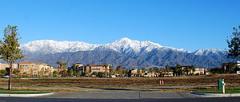
Rancho Cucamonga is a suburban city in San Bernardino County, California. As of the 2010 census, the city had a population of 165,269, up from 127,743 at the 2000 census. L. Dennis Michael was elected as Mayor on November 2, 2010. John Gillison is the City Manager. The city was incorporated in 1977, as a result of a vote among the residents of the unincorporated communities of Alta Loma, Cucamonga, and Etiwanda.
Money's Best Places to Live 2006 ranked Rancho Cucamonga as #42 in America.
Rancho Cucamonga is located at 34 °7 a²24 a³N 117 °34 a²46 a³W / 34.12333 °N 117.57944 °W / 34.12333; -117.57944 (34.123345, -117.579404), or about 39 miles (63 km) east of Los Angeles.
According to the United States Census Bureau, the city has a total area of 39.9 square miles (103 km2). 99.95% of it is land and 0.05% is water.
Rancho Cucamonga is the conjunction of the Mojave Trail, the Old Spanish Trail, the Santa Fe Trail, former U.S. Route 66 (now signed as Foothill Boulevard), and El Camino Real.
The 2010 United States Census reported that Rancho Cucamonga had a population of 165,269. The population density was 4,145.2 people per square mile (1,600.5/km ²). The racial makeup of Rancho Cucamonga was 102,401 (62.0%) White, 15,246 (9.2%) African American, 1,134 (0.7%) Native American, 17,208 (10.4%) Asian, 443 (0.3%) Pacific Islander, 19,878 (12.0%) from other races, and 8,959 (5.4%) from two or more races. Hispanic or Latino of any race were 57,688 persons (34.9%). Non-Hispanic Whites were 42.7% of the population in 2010, down from 78.1% in 1980.
The Census reported that 162,145 people (98.1% of the population) lived in households, 136 (0.1%) lived in non-institutionalized group quarters, and 2,988 (1.8%) were institutionalized.
There were 54,383 households, out of which 23,055 (42.4%) had children under the age of 18 living in them, 30,533 (56.1%) were opposite-sex married couples living together, 7,514 (13.8%) had a female householder with no husband present, 3,257 (6.0%) had a male householder with no wife present. There were 2,995 (5.5%) unmarried opposite-sex partnerships, and 425 (0.8%) same-sex married couples or partnerships. 9,956 households (18.3%) were made up of individuals and 2,679 (4.9%) had someone living alone who was 65 years of age or older. The average household size was 2.98. There were 41,304 families (76.0% of all households); the average family size was 3.41.
The population was spread out with 42,550 people (25.7%) under the age of 18, 17,365 people (10.5%) aged 18 to 24, 48,600 people (29.4%) aged 25 to 44, 43,710 people (26.4%) aged 45 to 64, and 13,044 people (7.9%) who were 65 years of age or older. The median age was 34.5 years. For every 100 females there were 97.6 males. For every 100 females age 18 and over, there were 95.2 males.
There were 56,618 housing units at an average density of 1,420.1 per square mile (548.3/km ²), of which 35,250 (64.8%) were owner-occupied, and 19,133 (35.2%) were occupied by renters. The homeowner vacancy rate was 1.6%; the rental vacancy rate was 5.2%. 110,570 people (66.9% of the population) lived in owner-occupied housing units and 51,575 people (31.2%) lived in rental housing units.
As of the census of 2000, there were 127,743 people, 40,863 households, and 31,832 families residing in the city. The population density was 1,317.0/km ² (3,411.4/mi ²). There were 42,134 housing units at an average density of 434.4/km ² (1,125.2/mi ²). The racial makeup of the city was 66.53% White, 9.00% Asian, 0.67% Native American, 5.99% African American, 0.27% Pacific Islander, 13.25% from other races, and 5.41% from a biracial or multiracial background. Hispanic or Latino of any race were 27.78% of the population.
There are 40,863 households, of which 44.7% have children under the age of 18. 60.2% of households consist of a married couple living together. 12.8% have a female householder with no husband present. 22.1% were non-families. 16.8% of all households are single-person and 4.1% have a person of 65 years of age or older. The average household size was 3.04 and the average family size was 3.44.
In the city, the population spread is as follows: 29.9% are under the age of 18, 9.9% are from 18 to 24, 33.2% are from 25 to 44, 21.0% are from 45 to 64, and 6.1% are 65 years of age or older. The median age is 32 years. For every 100 females there were 100.1 males. For every 100 females age 18 and over, there were 98.0 males.
The median income for a household in the city was $78,428 and the median income for a family was $91,240. Males had a median income of $50,288 versus $40,952 for females. The per capita income for the city was $23,702. About 4.9% of families and 7.1% of the population were below the poverty line, including 7.6% of those under age 18 and 7.3% of those age 65 or over.
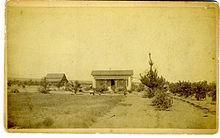
(*): Population figures for 1950 and 1970 are for the Cucamonga portion of the city only and the figures were tabulated prior to incorporation in 1977. The 1960 census data was not available.
Source: U.S. Census Bureau
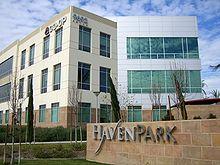
While most of the city's land area is devoted to residential areas, Rancho Cucamonga, like its neighbors Ontario and Fontana, is a major center for the Logistics industry in Southern California. This is due to its proximity to two Interstate Highways and Ontario International Airport, and the space afforded by the large tracts of former agricultural land in the southern section of the city. In the area around Milliken Avenue, between Archibald and Etiwanda Avenues, Foothill Boulevard, and Fourth Street, about seven square miles of land are primarily occupied by numerous massive distribution centers, and even more, smaller manufacturing companies. This area is ringed by wealthy office parks, mostly along Haven Avenue, and shopping strips, such as the Terra Vista Town Center (part of a nearly two-square-mile master-planned community in the center of the city), and malls, such as the Ontario Mills, across Fourth Street in Ontario. The city is also home to Tamco Steel, which runs the only steel mini-mill in California. This mill recycles ferrous scrap, such as junked cars and appliances, to produce rebar.
The city hosts The Epicenter, a minor-league baseball stadium, home of the Rancho Cucamonga Quakes. The Quakes' mascot, Tremor, is a "Rallysaurus".
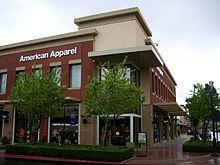
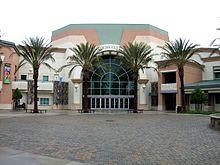
The Victoria Gardens lifestyle center, built in the eastern end of the city, is located at the intersection of Foothill and Day Creek Boulevards. Since the city had never developed a traditional commercial downtown like neighboring cities Ontario and Upland had, efforts were made in the design of Victoria Gardens to bring elements of more traditional and urban town design to what had historically been a suburban city. While retaining many characteristics of traditional shopping malls, such as large anchor stores, a food court, and vast parking lots and garages, the smaller stores are arranged as city blocks in a grid of two-lane streets, featuring lush landscaping and metered "teaser parking" in front of the stores, which open onto the sidewalk. There are two "Main Streets", which run from west to east across the center. Running from north to south between them is a pedestrian axis leading from one of the Macy's anchor stores, through a "town square" between a pair of mixed-use office buildings, to the Victoria Gardens Cultural Center, which contains a 570 seat theater and a city library. There are restaurants throughout the center, both well-known chains and unique eateries including California Pizza Kitchen, Fleming's, Gyu-Kaku Japanese BBQ Dining, Harry's Pacific Grill, Johnny Rockets, King's Fish House, Lucille's BBQ, P.F. Chang's China Bistro, Richie's Diner, T.G.I. Friday's, and Yard House. The center features a 12 screen AMC Theatre. Foothills Crossing is a shopping center located at Foothill Blvd.
Across the street from Victoria Gardens, Rancho Cucamonga also boasts Southern California's only Bass Pro Shops Outdoor World superstore.
According to the City's 2011 Comprehensive Annual Financial Report, the top employers in the city are:
Rancho Cucamonga is a General Law City, incorporated in 1977 under the "Council-Manager" form of local government. The four-member Council, plus the Mayor, City Clerk, and City Treasurer, are all elected at-large by the voters of the city. The Council then appoints the City Manager, who acts as the administrative head of the city government, and is responsible for the day-to-day operations, code enforcement, and the fiscal soundness of the municipal government. The council itself serves as a local legislative body.
According to the city aos most recent Comprehensive Annual Financial Report, the city aos various funds had $278.3 million in Revenues, $243.6 million in expenditures, $1,400.7 million in total assets, $492.1 million in total liabilities, and $583.3 million in cash and investments.
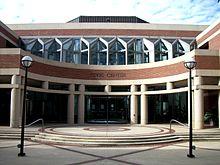
The structure of the management and coordination of city services is:
In the state legislature Rancho Cucamonga is located in the 31st Senate District, represented by Republican Robert Dutton, and in the 63rd Assembly District, represented by Republican Mike Morrell. Federally, Rancho Cucamonga is located in California's 26th congressional district, which has a Cook PVI of R +3 and is represented by Republican David Dreier. In 2005, the non-partisan Bay Area Center for Voting Research ranked Rancho Cucamonga as the 28th most conservative city in the United States.
Rancho Cucamonga is also home to the Foothill Communities San Bernardino County Courthouse.
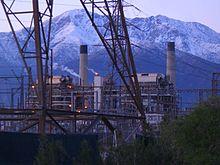
Rancho Cucamonga's location at the base of the San Gabriel Mountains has necessitated the use of numerous control channels and basins to reduce the seasonal flood danger from the several streams descending from the range. In past years, some of the city's roads were known for flooding. Hermosa Avenue, in particular, now features many high curbs and extra-large storm drain grates to reduce flooding.
Rancho Cucamonga receives natural gas from the Southern California Gas Company. The city's water supply and sewage are managed by the Cucamonga Valley Water District. Garbage collection is by Burrtec Disposal, phone service is from Verizon, and cable TV is provided by Time Warner Cable and Charter Communications.
Electric power in Rancho Cucamonga is provided by Southern California Edison and the Rancho Cucamonga Municipal Utility, and the city is also home to the Reliant Energy Etiwanda Generating Station, on Etiwanda Avenue. This facility, one of five Reliant stations in California, is a natural gas-fired power plant, which began operation in 1963. At 640 MW net capacity, it is Reliant's second-highest capacity plant on the West Coast. It utilizes four steam turbine generators; of which units three and four are currently active. Steam turbines one and two, as well as a combustion turbine, were retired in 2003 and 2004, respectively. Several systems are in place to control gas emissions, and annually, over 900,000,000 gallons of recycled water are used for cooling.
On 29th November 2011, The Inland Empire Utilities Agency has installed the first wind turbine in Rancho Cucamonga.
Rancho Cucamonga is served by Omnitrans Bus Service, Metrolink Train Service, and nearby Ontario International Airport. Interstate 15 and the relatively new 210 freeway extension run through Rancho Cucamonga as well as the historic U.S. Route 66. I-15 sits atop an elevated berm, and cuts a curve through the southeastern part of the city, isolating a mostly industrial area, a small shopping center, and several housing tracts from the larger part of the city. It then levels out toward the north, and forms part of the northeastern border with neighboring Fontana, before entering the Cajon Pass through the San Gabriel Mountains. Route 210 runs nearly straight east-west through the northern part of the city, roughly bisecting the residential communities of Alta Loma and Etiwanda. The western section of the freeway, as it passes through the city, sits in a trench, but east of Day Creek Boulevard, the freeway levels out, then becomes elevated as it passes the San Sevaine creek flood control basins, before passing into Fontana at the angled interchange with I-15.
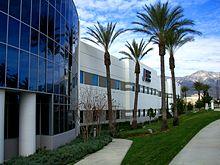
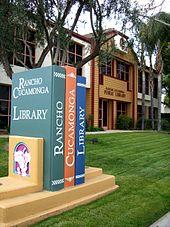
Rancho Cucamonga has multiple public K-12 schools, operating under several different school districts, within its borders: Alta Loma School District, Central School District, Cucamonga School District, Etiwanda School District, and Chaffey Joint Union High School District. In addition to these, Rancho Cucamonga is the home to Chaffey College and satellite campuses of the University of La Verne, University of Redlands, Everest College, and University of Phoenix, as well as the automotive trade school, Universal Technical Institute. Its newest addition is the private school Upland Christian Academy.
High Schools
The city of Rancho Cucamonga has two public libraries, with a combined total of over 200,000 volumes. The library at 7368 Archibald Avenue opened in 1994 and was remodeled in the summer of 2008. The Paul A. Biane library at 12505 Cultural Center Drive at the Victoria Gardens Cultural Center opened in August 2006.
Remembered by fans of comedian and radio personality Jack Benny who would often hear a train announcement made by Mel Blanc calling out: "Train leaving on track five for Anaheim, Azusa and Cucamonga!". In addition to the effectiveness of Blanc's delivery of the line, the humor rested partly on the fact that the three towns are in different directions and no single train could have served all three. This running gag became so well known that it eventually led to a statue of Benny in Cucamonga. Rancho Cucamonga has been featured on the Comedy Central hit show Workaholics where it was nicknamed "Hollywood East". Rancho Cucamonga is the setting of the movie Next Friday; the home owned by Uncle Elroy and Day Day is in Rancho Cucamonga.
Word Count: 2904







